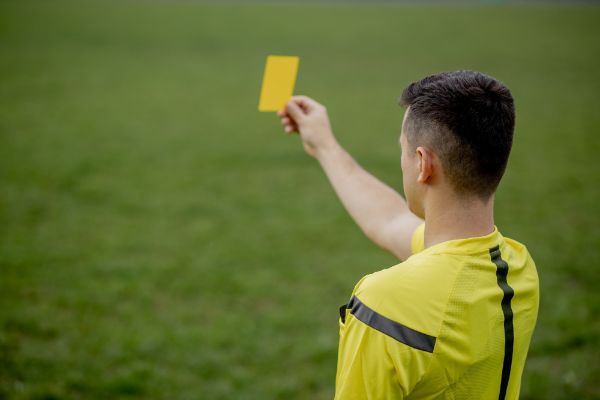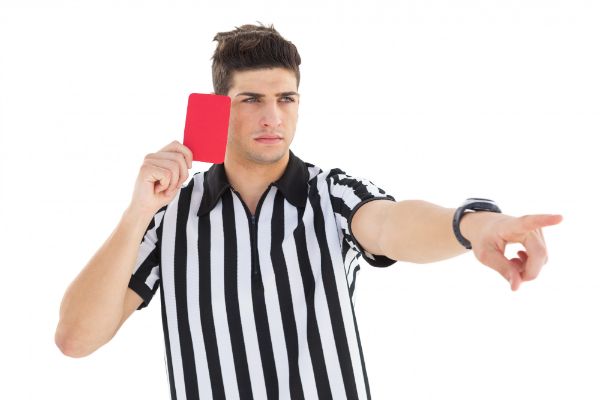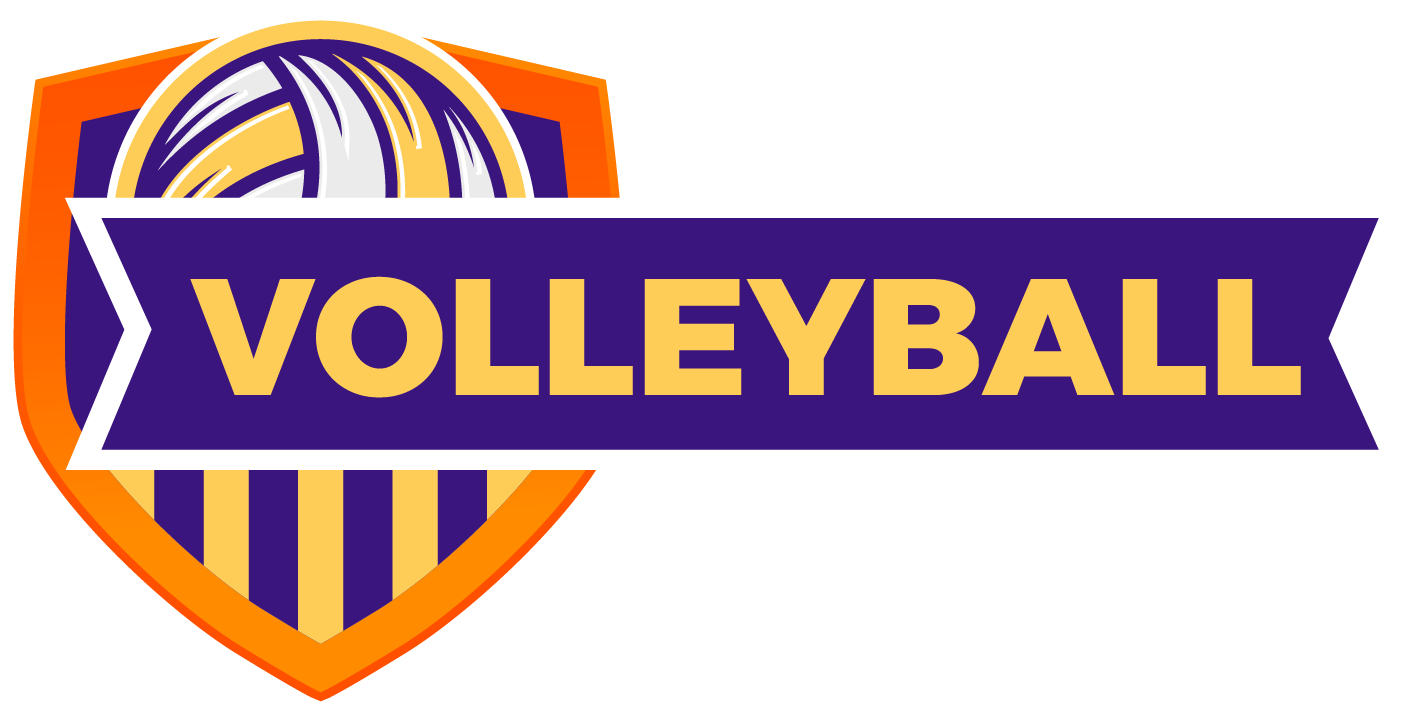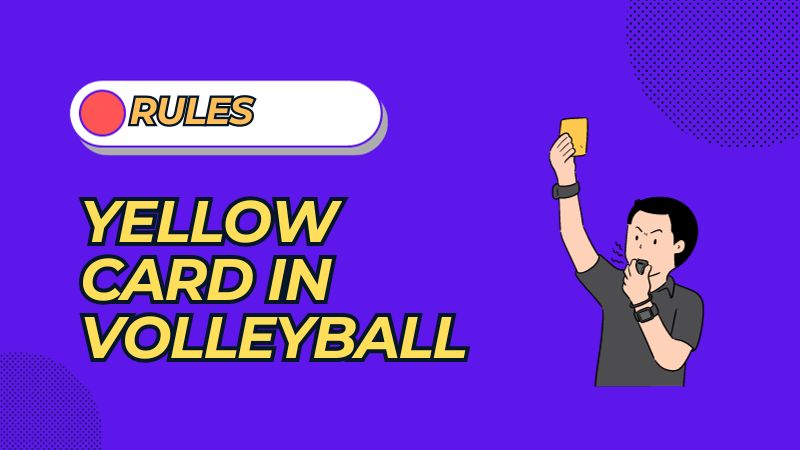As a seasoned volleyball player and coach, I’ve witnessed firsthand the moments when a referee’s decision can shift the entire dynamic of a match. Whether you’re a beginner or an experienced player, understanding volleyball rules and penalty cards, like yellow and red cards, is crucial. Most people are familiar with yellow and red cards in sports, often signaling that something has gone awry on the court. But in volleyball, what exactly does a yellow card signify?
Today, I’ll dive into the nuances of yellow and red cards in volleyball, drawing from my experiences in dual-nationality professional leagues and coaching scenarios. We’ll explore what these cards mean, their impact on the game, and how players and teams should respond to them.
What Does a Yellow Card Mean in Volleyball?
In volleyball, the yellow and red card system is a familiar sight, much like in other sports. These cards serve as a sanctioning level to maintain control, ensure fair play, and manage the conduct of players and coaches. Kept at the referee’s stand, these cards are pivotal in addressing heated situations that may arise during a match. However, it won’t appear out of the blue as you will be given a verbal warning for minor misconduct before a yellow card.

The yellow card in volleyball is a critical component of the sport’s disciplinary system. It serves as a formal tool for managing behavior and maintaining the decorum of the game. Unlike some other sports where a yellow card might carry an immediate penalty, in volleyball, its primary role is as a warning.
The introduction of yellow cards in volleyball plays a vital role in preventing foul play and sportsmanship. It’s a visible reminder to players and coaches to adhere to the game’s rules and maintain a respectful attitude toward officials and the opposing team. This preventive measure helps to avoid actions that could escalate into more serious offenses, ensuring a positive and competitive environment.
The player shown a yellow card is also under closer scrutiny for future outbursts or other unsportsmanlike conduct. However, if it was simply an honest mistake and you just got carried away as long as you don’t repeat the offense, nothing bad happens to you or your team.
How a Yellow Card is Issued
- Initial verbal warning: The system usually starts with a formal warning from the referee on the first violation. This is the first indication that a player or coach’s behavior is not in line with the expected standards.
- Display of the yellow card: If the behavior continues or another instance of misconduct occurs, the referee escalates the warning to a yellow card. This involves blowing the whistle, raising the yellow card, and pointing to the individual it is issued to.
- Timing and impact: Typically, yellow cards are shown between points. It’s important to note that receiving a yellow card does not directly affect the game’s score sheet or result in a penalty point against the team. It serves as a formal recognition of misconduct and a caution against further violations.
What is a Warning for Minor Misconduct in Volleyball?
In volleyball, the concept of minor misconduct is one that every player, coach, and team member should be familiar with. As outlined in the FIVB official volleyball rulebook, minor misconducts are not severe offenses, but they do warrant attention and can lead to formal warnings if not addressed properly.
Minor misconduct in volleyball is those actions or behaviors that, while not severe, deviate from the expected standards of conduct on the court. They are infractions that do not necessitate immediate sanctions but certainly require a firm warning. Minor misconduct can be classified as:
- Disrespectful gestures: Non-threatening and non-abusive actions that show disrespect towards officials or opposing players.
- Mild verbal altercations: Verbal exchanges that are not aggressive but still fall outside the bounds of respectful communication.
- Minor delays of the game: Actions that slightly delay the game, like taking extra time to serve or set up a play.

The first instance of minor misconduct typically results in what is known as a first-stage reminder. This is essentially a civil reminder from the referee to the involved parties to adhere to the standards of the game.
Receiving a first warning in volleyball is a clear signal that while the behavior in question is not severely punishable, it is not acceptable. It serves as a preventive measure, aimed at nipping potential misconduct in the bud before it escalates.
As a coach, it’s crucial to educate and remind your team about the importance of maintaining decorum on the court. Encouraging players to understand the implications of their actions and to show respect for the game, officials, and opponents is fundamental to fostering a positive volleyball environment.
How the Volleyball Penalty System Works
Volleyball, like any sport, has a structured system in place to manage player and coach conduct during matches. This system is divided into two main phases: Minor Misconduct and Sanctioning. While we’ve already covered minor misconducts, it’s important to understand what leads to a ‘Sanction’, which is reserved for more serious offenses.

The Sanctioning phase in volleyball addresses and manages more severe breaches of conduct. This phase is broken down into three specific types of behavior, each carrying its level of severity and consequences.
Sanctions in volleyball can range from the loss of points to the ejection of players from the game. In severe cases, they can even affect future matches, emphasizing the importance of maintaining discipline and respect throughout a volleyball career.
Types of Behaviors Leading to Sanctions
- Rude Conduct: This involves actions that are contrary to good manners or moral principles. Examples could include disrespectful gestures or language directed at players or officials.
- Offensive Conduct: This category covers vulgar, defamatory, or insulting behavior, particularly aimed at officials. It’s a more serious violation than rude conduct, often involving more explicit or harmful language or gestures.
- Aggression: The most severe category, aggression includes physical aggression or behavior that threatens an attack, either towards other players, officials, or any team members.
- Discretion of the First Referee: The decision on the classification and severity of a behavior lies with the Head Referee, often referred to as the First Referee in volleyball. They hold the discretion to determine the appropriate sanctions and penalties based on their judgment of the situation.
- Severity Interpretation: There is room for interpretation in the severity of behavior, which means the referee’s understanding and perception of the conduct play a crucial role in the type of sanction applied.
- Importance of Good Behavior: Given this discretionary power, it is essential for players and coaches to maintain good behavior, not just during the match but even before the game begins, to avoid any negative interpretations that could lead to severe sanctions.
What Does a Red Card Mean in Volleyball?
In volleyball, a red card holds significant meaning. It symbolizes a ‘penalty‘ and indicates the immediate loss of one point for the offending team. This is considered the first stage of a three-stage process in volleyball sanctions.
- Initial Penalty: A red card alone is an indication of a penalty, marking the starting point of the sanctioning process.
- Allowed to Play: Interestingly, a player or coach who receives a red card will still be allowed to continue in the game. However, any new offenses after this point will be met with additional sanctions.
- Lightest Offense in Sanctions Phase: In the hierarchy of sanctions in volleyball, a red card represents the lightest offense once a player or coach has entered the sanctions phase.

It’s crucial to understand the behaviors that can lead to receiving a red card in volleyball. Volleyball Victories does not advocate for any of these behaviors but aims to educate players and coaches on what to avoid:
- Rude Conduct: This includes disrespectful actions and minor violations of volleyball etiquette.
- Offensive Conduct: More serious than rude conduct, involving vulgar or insulting behavior.
- Aggression: The most serious category, including physical aggression or threatening behavior.
The Levels of Sanctions in Volleyball
The official sanctions in volleyball, as laid out by the FIVB, progress through three categories:
- Level 1 – Penalty: The first level involves the immediate loss of a point, with the offending player or coach being shown a red card.
- Level 2 – Expulsion: At this level, a player or coach is expelled from the current set. For players, this means they cannot partake or contribute for the rest of the set. Coaches, on the other hand, are mandated to leave from the bench and sit in the penalty area. A red and yellow card held side by side in the first referee’s hand means expulsion from the game.
- Level 3 – Disqualification: The most severe sanction, disqualification, requires the player to be substituted immediately and leave the playing area and Competition-Control Area for the remainder of the match. This can occur from one act of ‘Aggression’, two offenses of ‘Offensive Conduct’, or three instances of ‘Rude Conduct’. When the first referee shows a yellow card and a red card separately that means disqualification from the match.
Volleyball Victories Fun Fact: The Green Card!
Did you know? Volleyball is taking a unique turn in promoting sportsmanship! For the first time in international competitions, green cards are being introduced – not for penalties, but for rewarding honesty. In a groundbreaking move, players who admit to a block touch or a net touch will receive a green card, saving time from unnecessary video challenges.
The most honest team at the Volleyball Nations League (VNL) finals, judged by the number of green cards received, will be awarded a “Fair Play Moment” prize of USD 30,000. This innovative approach not only promotes fair play but also adds an exciting twist to the game!
Conclusion
Understanding the penalty system in volleyball like red and yellow cards is crucial, but equally important is maintaining sportsmanship and composure on the court. Remember, a yellow card is merely a warning and doesn’t affect the score, but it’s a prompt to calm down, reassess your actions, and avoid making any serious foul play.

Embracing good sportsmanship not only enhances the game’s spirit but also earns you respect. Every action on the court is an opportunity to demonstrate integrity and respect, turning the heat of the moment into a lesson in personal growth and teamwork.
FAQs
What does a yellow card do in volleyball?
In volleyball, a yellow card serves as the second stage of a formal warning for players or coaches, indicating minor misconduct. It acts as a visual and official reminder from the referee to maintain proper conduct on the court. This warning is crucial in preventing further infractions and maintaining the integrity and spirit of the game.
What happens if you get 2 yellow cards in volleyball?
Receiving a second yellow card in volleyball results in the ejection of the player or coach from the game. This means they must leave the facility and will face a suspension from subsequent matches or competitions. The accumulation of yellow cards signifies repeated or escalating misconduct, warranting this stricter penalty.
How do I appeal a yellow card in volleyball?
In volleyball, appealing a yellow card is generally not permissible. Yellow cards are issued at the discretion of the officials and are considered final. They are intended as immediate, non-debatable warnings for minor misconduct. This rule emphasizes the importance of respecting the referee’s authority and decisions during the match.

